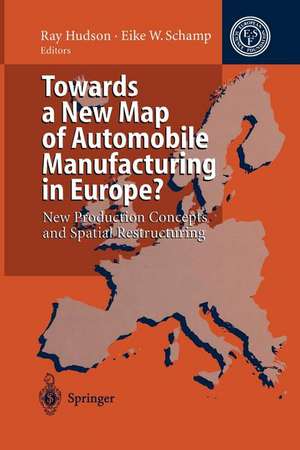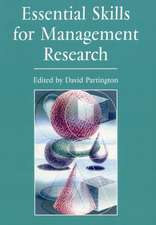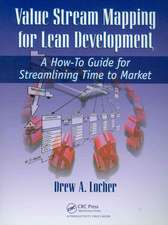Towards a New Map of Automobile Manufacturing in Europe?: New Production Concepts and Spatial Restructuring
Editat de Ray Hudson A. Amin Editat de Eike W. Schamp S. Conti, P. Dicken, A. Enriette, J. Ferrao, A. Malmberg, D. Sadler, J. Savary, M. Valeen Limba Engleză Paperback – 20 dec 2011
Preț: 640.24 lei
Preț vechi: 753.22 lei
-15% Nou
Puncte Express: 960
Preț estimativ în valută:
122.51€ • 128.25$ • 101.37£
122.51€ • 128.25$ • 101.37£
Carte tipărită la comandă
Livrare economică 07-21 aprilie
Preluare comenzi: 021 569.72.76
Specificații
ISBN-13: 9783642794735
ISBN-10: 3642794734
Pagini: 292
Ilustrații: XVII, 269 p.
Dimensiuni: 155 x 235 x 15 mm
Greutate: 0.41 kg
Ediția:Softcover reprint of the original 1st ed. 1995
Editura: Springer Berlin, Heidelberg
Colecția Springer
Locul publicării:Berlin, Heidelberg, Germany
ISBN-10: 3642794734
Pagini: 292
Ilustrații: XVII, 269 p.
Dimensiuni: 155 x 235 x 15 mm
Greutate: 0.41 kg
Ediția:Softcover reprint of the original 1st ed. 1995
Editura: Springer Berlin, Heidelberg
Colecția Springer
Locul publicării:Berlin, Heidelberg, Germany
Public țintă
ResearchDescriere
This book is the product of four years of collaborative work within the framework of the European Science Foundation's Regional and Urban Restructuring in Europe (RURE) programme. With one exception, all of the chapters have been prepared by participants in RURE - the exception being that commissioned from Conti and Enrietti on Fiat and Italy to provide a fuller coverage of changes in the main automobile producing companies and countries of Europe. A - perhaps the - central theme around which the RURE programme was conceived is that the restructuring of the production system lies at the heart of the changing map of Europe. Equally, it continues to be the case that the automobile industry lies at the cutting edge of the search for viable new models of production. Some eighty years ago the automobile industry occupied a pivotal position in the transition from craft to mass production - indeed "Fordism" came to denote not just a particular micro-economic model of production organisation in the factory but a macro-scale model of economic development, characterized by a particular pattern of relations between mass production, mass consumption and national state regulation. From the late 1960s, however, it became increasingly clear that Fordism as a macro-scale model of advanced capitalist development was reaching its limits.
Cuprins
1 New Challenges to the Automobile Production Systems in Europe.- 1.1 Introduction.- 1.2 The European Automobile Industry in Global Context.- 1.2.1 The global significance of the European automobile system.- 1.2.2 Europe’s position in the global strategies of the major automobile producers.- 1.3 The Automobile Production Systems Approach.- 2 National and International Regulatory Frameworks: The Politics of European Automobile Production and Trade.- 2.1 Introduction.- 2.2 National Regulatory Environments in Europe.- 2.3 International Regulation: the European Community’s Policies Towards Auto Production and Trade.- 2.4 Concluding Comments.- 3 “Europeanisation” in the Automotive Components Sector and Its Implications for State and Locality.- 3.1 Introduction.- 3.2 The Changing Geography of Automotive Components Production in the United Kingdom.- 3.3 “Europeanisation” and Corporate Strategies in the Automotive Component Sector.- 3.3.1 Bosch.- 3.3.2 Valeo.- 3.3.3 Four major UK companies: Lucas, GKN, T & N, BBA.- 3.3.4 Four major US companies: TRW, Allied-Signal, ITT and Tenneco.- 3.3.5 Japanese component companies and Europe.- 3.4 Concluding Comments.- 4 The Japanese, the European Market and the Automobile Industry in the United Kingdom.- 4.1 Introduction.- 4.2 Competition Between Automobile Companies in the United Kingdom.- 4.3 Cooperation Between Automobile Companies in the United Kingdom.- 4.4 Cooperation Between Component Suppliers and Automobile Producing Companies in the United Kingdom.- 4.5 Competition and Cooperation Between Component Companies in the United Kingdom and European Community.- 4.6 Capital: Labour Relations.- 4.7 State Regulation of Japanese Competition: European Community Trade Policies, National Interests and Corporate Interests.- 4.8 The Local and Regional Development Implications of Japanese Inward Investment: Just-in-Time and In One Place ?.- 4.9 Concluding Comments.- 5 The German Automobile Production System Going European.- 5.1 Introduction.- 5.2 Market Structures During the 1980s.- 5.3 Competitiveness via the Technological Competences of Automobile Producers.- 5.3.1 The emergent spatial pattern.- 5.3.2 Choices in product and process.- 5.3.3 Two joint strategies: Europeanisation and flexibilisation.- 5.3.4 The 1990s.- 5.4 Organisational and Spatial Restructuring of the Components Sector.- 5.5 Consequences for Labour.- 5.6 The Changing Geography of the German Automobile Production System During the 1990s.- 6 The Italian Automobile Industry and the Case of Fiat: One Country, One Company, One Market ?.- 6.1 Introduction.- 6.2 The Italian Automobile Industry: Some Structural Features.- 6.3 The Relationship Between the Automobile Industry and Government Economic Policies.- 6.3.1 Protectionist policies.- 6.3.2 Bail-out policies.- 6.3.3 Policies of territorial re-equilibrium.- 6.3.4 Other forms of state intervention.- 6.4 Spatial Strategies and Reorganisation Strategies.- 6.4.1 The approach: the automobile industry as a complex industrial system.- 6.4.2 From expansion to crisis.- 6.4.3 The first turning point.- 6.4.4 The 1980s: the great rationalisation.- 6.5 Continuity and Discontinuity in the Geography of the Italian Automobile System.- 6.6 Concluding Comments.- 7 Competitive Strategies in the World Market: The Case of Renault and the Emergence of a European Group ?.- 7.1 Introduction.- 7.2 Why Did European Automobile Companies Have to Make Strategic Changes ?.- 7.3 A Basic Answer: Improving Efficiency.- 7.3.1 Project structures.- 7.3.2 Development of quality.- 7.3.3 Automation, just-in-time manufacturing and supply.- 7.3.4 A new supply policy.- 7.3.5 Restructuring the European plants.- 7.3.6 National and international agreements.- 7.4 A Missed Opportunity: Renault’s Failure to Grow Outside Europe.- 7.4.1 The missed deal in the USA.- 7.4.2 The weak positions in other countries.- 7.5 The Result: The Weaknesses of Renault in the 1990s.- 7.6 A European Answer: Rise and Fall of the Renault-Volvo Merger.- 7.6.1 1990–1993: the deepening of the alliance.- 7.6.2 September 1993: the move towards a merger.- 7.6.3 December 1993: the merger failure.- 7.7 Privatisation and After?.- 7.7.1 Towards a Renault-Fiat deal ?.- 7.7.2 Towards new international alliances within Europe.- 8 The Restructuring of the Swedish Automobile Production System.- 8.1 Introduction.- 8.2 The Swedish Automobile Production System — Some General Characteristics.- 8.3 Volvo and Saab: Corporate Structures and Strategies.- 8.3.1 Diversification.- 8.3.2 Internationalisation.- 8.3.3 Production organisation and location.- 8.4 1970 to 1987: From Crisis to Success.- 8.5 1988 to 1992: Renewed Crisis and Intensive Restructuring.- 8.5.1 Saab Automobile.- 8.5.2 Volvo.- 8.6 Post 1992: Future Prospects for Swedish Car Production.- 8.6.1 Lost national identities ?.- 8.6.2 Prospects for component suppliers.- 8.7 Concluding Comments.- 9 Multi-purpose Vehicles, a New Opportunity for the Periphery ? Lessons from the Ford\VW Project (Portugal).- 9.1 Introduction.- 9.2 Prospects for the Growth of Multi-purpose Vehicles: The Visible Hand of the Single Market.- 9.3 The Automobile Industry in Portugal.- 9.3.1 The formation of the industry.- 9.3.2 The current situation.- 9.4 The Ford Wolkswagen (AutoEuropa) Project.- 9.4.1 Background.- 9.4.2 A brief description of the project.- 9.4.3 Investment and financing.- 9.4.4 Production and markets.- 9.4.5 Employment.- 9.4.6 The process of setting up supplier-networks.- 9.4.7 The geography of direct suppliers: possible outlines of an emerging archipelago.- 9.5 Concluding Comments.- 10 Interdependent and Uneven Development in the Spatial Reorganisation of the Automobile Production Systems in Europe.- 10.1 Introduction.- 10.2 Challenges to the Core from Western and Southern Europe.- 10.3 Central and Eastern Europe — the New ‘Frontier’ of European Automobile Production.- 10.4 Resistance to the Erosion of the European Automobile Core.- 10.5 Towards a New Map of Automobile Production in Europe ?.- Author Index.- Location Index.














